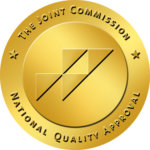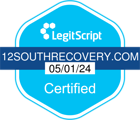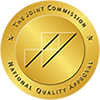Today, alcohol and drug use is often glamorized in its presentation so that it camouflages the difference between fantasy and reality. Substance use is portrayed on film and in music, on social media and in ads, as fun, cool, or as an indication of success and rebellion. These depictions can downplay the devastating effects of addiction and influence how people, especially teenagers and young adults, view substance use. Understanding why and how society makes drinking and drug-taking a trivialization is an integral step in transforming counterproductive tales and promoting healthier and informed choices.
The Marketing of Alcohol and Drug Use
While glorifying substance use in society is not new, it is becoming increasingly problematic. Individuals, both young and old, may view favorable marketing ads and film depictions of drug use as fact. Many companies are using subliminal advertising that places images of drugs and alcohol into popular media without making it the focus. This engages with the viewer subconsciously, priming them for favorable opinions on substances. Additionally, companies are frequently targeting the ads to vulnerable communities. You’ll see these predatory marketing techniques come into play as we discuss alcohol and drug use in the media. It is more important than ever to acknowledge the impact of glorified alcohol and drug use in society.
Alcohol and Drug Use in the Media
Society is becoming increasingly reliant on technology. For many, technology is a necessary part of daily life. In fact, according to the U.S. Census Bureau, nearly 95% of all U.S. households had a computer, and 90% had an active internet subscription in 2021. In this survey, desktops, laptops, tablets, and smartphones were also considered computers.
For those who use technology, it is only a matter of time before they are exposed to problematic substance use depictions and marketing. Alcohol and drug use are portrayed in all forms of media, including movies, the news, podcasts, songs, social media, and video games. More often than not, these depictions are inaccurate and misleading. As a result, viewers may become curious about the effects of alcohol and other drugs. They may even feel tempted to use these substances themselves.
Such representations can distort the viewer’s understanding, making risky behaviors appear normal, exciting, or even desirable. This is especially concerning for impressionable audiences like teenagers and young adults, who are still developing their values and decision-making skills. Research has shown that consistent exposure to substance use in media can increase the likelihood of experimentation, lower perceived risk, and even contribute to patterns of misuse or addiction. Over time, what starts as curiosity fueled by these glorified portrayals can evolve into habitual use, putting individuals at serious risk of both physical and mental health consequences.
Effects of Alcohol Abuse on Society
In the media, alcohol is commonly depicted and often glorified. According to a publication by the National Academy of Sciences, a research analysis from 1999 indicated that nearly 71% of all media programming portrayed alcohol use, with 77% referencing alcohol in one way or another. It is essential to point out that these statistics were from nearly two decades ago. We can only speculate that these numbers have increased as technology has become more prominent and widely used.
The normalization of alcohol use in the media can cause young viewers to wish they were of drinking age. Whether individuals watch their favorite movie characters drinking or see an advertisement about alcohol on television, alcohol use in media can enable individuals to emulate the behavior.
This pervasive exposure can significantly influence young viewers’ perceptions and behaviors. Research indicates that such media depictions are linked to earlier initiation of alcohol use and increased consumption among youth who drink . The normalization of alcohol use in media can lead adolescents to underestimate the risks associated with drinking, potentially fostering unhealthy habits that persist into adulthood.
However, these depictions rarely ever shed light on the potential health consequences of alcohol use. Although alcohol is widely used, its consequences on one’s life can outweigh its potential benefits. Therefore, it is vital to understand that these inaccurate depictions are concerning and often contribute to the development of addiction and other forms of substance abuse.
Nicotine, Tobacco, and Marijuana
Portrayals of nicotine and tobacco use are often just as common as alcohol use within the media. According to Current Addiction Reports, the tobacco and alcohol industries have long targeted youth. These industries do so:
…[I]n the form of paid placements of products in films, television, and video games that are popular among youth, sponsorship of sporting events and concerts, and colorful packaging. Moreover, youth are high consumers of entertainment media, and they are highly susceptible to media influence due to preoccupation with personal image and identity that makes them more likely to identify with and model what they view.
Such marketing influences paint smoking content as glamorous, rebellious, romantic, mature, and celebratory, leaving health consequences in the shadows.
It is also essential to look at newer drug-related products in the media. In the last several years, e-cigarettes and vapes have become increasingly popular for the use of both nicotine and marijuana. These devices are often marketed as “safer alternatives” for traditional tobacco products, such as cigarettes. However, these devices are only marketed that way because their long-term health effects are unknown. Recent studies have only begun to address the damaging health effects of vaping and smoking.
Illegal Drug Use Is a Bigger Problem Than Alcohol
Unfortunately, illegal drug use is a global health problem. The opioid epidemic has contributed to a devastating number of overdose deaths worldwide. Still, illegal drug use is often glorified in the media. In addition to opioids, commonly depicted illicit drugs include stimulants, club drugs, dissociatives, and hallucinogenic drugs. Similar to the trends of smoking culture, illegal drug use may be portrayed in problematic ways.
In the media, illegal drug use may also attempt to portray individuals with substance use disorder (SUD). Even then, these depictions are misleading, often perpetuating stigma and judgment for those with addiction. If they aren’t villainized, the people with SUD are romanticized.
It is vital to differentiate misleading information from what is factual. Usually, it is safer to assume that media depictions are inaccurate. But, if anything, these depictions should be used as motivators to become educated about alcohol and drug use and its lasting effects.
Illegal Drug Use Often Leads to More Illegal Behavior
When a person begins to use illegal drugs, the consequences typically extend far beyond personal health. Drug use can alter judgment, lower inhibitions, and result in an addiction that forces people to make choices they would not otherwise make. Unfortunately, this all too frequently includes becoming involved in other illegal activities. For example, an addict might resort to stealing or lying to be able to afford his next fix, or to hanging with individuals who are members of criminal networks. Drunk driving, possession of contraband in public settings, or parole violations are also common legal penalties that come with drug and booze consumption.
These behaviors are not always reflective of one’s character— more often than not, they’re a behavior stemming from desperation, poor judgment, or a need to keep their habit going. Here at 12 South Recovery, we recognize that addiction touches on every area of one’s life, including the legal aspect. That’s why we don’t only work to heal drug use but also help our clients regain their dignity, own up, and be prepared to stay on a healthier path.
How does Substance Abuse Affect Society
Substance abuse impacts more than just the person struggling—it ripples out, touching every part of life. Families often carry the emotional weight, experiencing heartbreak, stress, and uncertainty as they try to support someone they love. Children may feel confused or neglected, partners may lose trust, and relationships can become strained or even broken.
In the workplace, addiction can lead to missed days, lower productivity, and safety concerns, while communities face rising healthcare costs, overcrowded emergency rooms, and increased crime tied to untreated substance use disorders.
That’s why treatment facilities like 12 South Recovery are so vital. By offering medical detox, therapy, and ongoing recovery support, 12 South Recovery gives individuals the tools to heal and rebuild their lives. When one person recovers, their family heals, and the community becomes stronger.
Addiction is a public health issue, not a moral failing—and access to compassionate, evidence-based treatment is one of the most powerful ways we can begin to repair its impact on society.
Call 12 South Recovery Today
Alcohol and drug use are commonly misrepresented and glorified in society. Becoming aware of these inaccurate depictions can be vital for your healing throughout recovery.
12 South Recovery is an addiction and mental health treatment facility that understands your challenges during treatment and recovery. We prioritize a client-centered philosophy of caring, ensuring that each client can address and overcome the underlying factors of their symptoms for lasting healing.If you are struggling with substance abuse or mental illness symptoms, we offer several services that can help you heal. Reach out to 12 South Recovery Today!


















